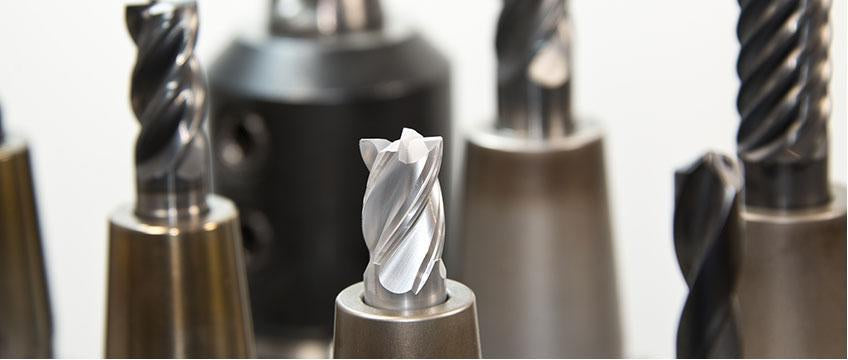Ready in 1 Hour

How to Choose the Right End Mill Coating
Since the development of the original Titanium Nitride (TiN) coating, the use of coatings for industrial cutting applications such as carbide end mills has become widespread. Hundreds of different coatings have been developed over the last decades along with the corresponding rise in popularity, yielding a dizzying array of options currently available in the market. As a result, it’s no small feat to understand and wade through the differences and eventually settle on the end mill coating that is truly best suited for your situation.
At Star Tool Inc, we provide the option of choosing from three major product series of high performance cutting tools with arguably the two best PVD coatings available on the market today. These coatings, known as Titanium Aluminum Nitride (TiAlN) and Aluminum Chromium Nitrite (AlCrN), will outperform others in a majority of uses and reliably provide the benefits that operators of cutting tools will be looking for in their industrial applications.
So what makes the TiAlN and AlCrN coatings particularly effective and when should you use each one?
Titanium Aluminum Nitride (TiAlN) Coating
TiAlN coating is an extremely popular option for use with carbide end mills today and for good reason. At a basic level, the mix of titanium and nitride resists the formation of built-up edges (BUEs). BUEs occur when materials gradually stick to the cutting edge of the tool and peal away the coating layer over time, causing the rake face of the cutting tool to separate from the chip.
TiAlN coating is widely used in applications where excessive heat is generated. The added aluminum serves as a thermal insulator, providing stability and heat resistance at extremely high temperatures. This layer of aluminum on the tool surface not only prevents further oxidation, but provides a hardness that resists chipping that may otherwise occur on other coatings.
You might notice TiAlN it bears the same chemical components as AlTiN. Despite this similarity, AlTiN comprises more aluminum and therefore much harder coating material, which can result in increased chipping when used to cut equally hard materials. TiAlN, alternatively, is softer and can be used more effectively in higher temperature dry milling environments.
Aluminum Chromium Nitrite (AlCrN) Coating
AlCrN coating further improves upon TiAlN coating by ditching titanium and instead substituting chromium in its place. Due to the fact that aluminum adheres to chromium, more aluminum can be added, thereby improving the hardness and oxidation resistance of the cutting tool.
The inclusion of chromium ensures that the coating will perform even better under high-speed and high-temperature milling environments. While AlCrN can be viewed as an improvement over TiAlN for that reason, it is also a more flexible coating overall and can be used in a variety of settings.
Our Product Line
As previously mentioned, we offer three distinct series for our carbide end mill products. The basic option, known as the "Performer Series,” comes uncoated. Meanwhile, the “Performer Plus Series” and “Performer Pro Series” contain TiAlN and AlCrN coatings respectively, providing the anti-BUE, anti-chipping, and heat insulation properties that you are undoubtedly looking for in your carbide end mills.
Conclusion
We hope this brief overview has been helpful in helping you understand the different tool coating options that are available and why we choose to offer the TiAlN and AlCrN options for end mill coatings.
Should you have any questions or inquiries, please do not hesitate to get in touch directly. We look forward to helping you acquire the high performance cutting tools necessary to meet your production goals!

